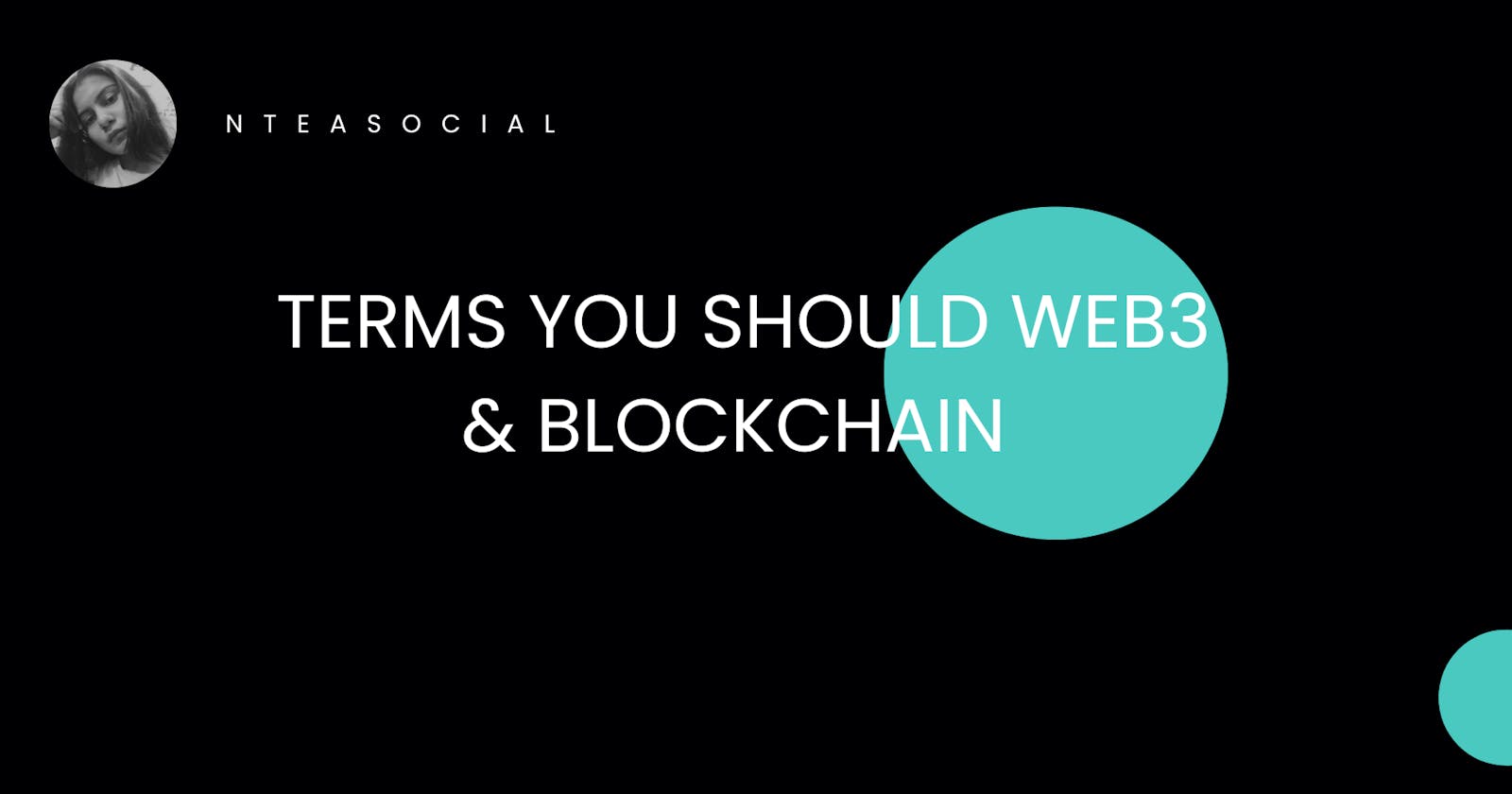Hello lovely humans, Shivani this side. I welcome you all to this piece of writing where I will be telling you most important and basic terms you should know as a developer or Web3 & BlockChain enthusiast.
I will be making blog series about web3 and crypto as I read and understand them on the way.
Blockchain
The blockchain is purely distributed peer — to — peer system of ledgers that utilises a software unit that consist of an algorithm, which negotiates the informational content of ordered and connected blocks of data together with cryptographic and security technology in order to achieve and maintain its integrity.
Independent witness is the key.
Blockchain — decentralised distributed immutable transparent ledger. Blockchain is a digital database/ledger which is distributed among the nodes of a peer-to-peer network. It stores the information digitally. It is known for its crucial role in cryptocurrency systems. A blockchain consists of a series of so-called blocks that are used to store information related to transactions that occur on a blockchain network.
What makes Blockchain so different from the ledgers we are using — from past to future?
— Well, Blockchain guaranteed the fidelity and security of recorded data and generates trust without the need of third party trust. Maintaining integrity is core of Blockchain.
The notable figures — Stuart Harber and W. Scott Stornetts
Disintermediation
Replacing the middleman is called as disintermediation.
Genesis Block
The first block ever recorded on the respective blockchain network. Its Previous Hash would be — 000 .
Hashing Algorithm
Cryptographic functions following up SHA256 Algorithm.
Hash Function — Small function which includes any kind of data to fixed lengths. It only accepts only one piece of data at a given time.
Blockchain uses SHA256 algorithm, which includes —
64 — hexadecimal characters
Each character — 4 bits
Total — 64*4 = 256 bits
Requirement of Hashing Algorithm —
It will only be append only and one way function Deterministic — regardless of the size of the input, the output will always be the same size. Fast Computation Withstand Collision — a hash function should be collision-resistant as it should be hard to find two inputs that hash to the same output. Avalanche Effect — Minor change will change the whole hash. Peer — to — Peer Network — a decentralised network communications model that consists of a group of devices (nodes) that collectively store and share files where each node acts as an individual peer.
— A group of computers are linked together with equal permissions and responsibilities for processing data
Mempool
A mempool (a portmanteau of “memory pool”) acts as a sort of waiting room for pending cryptocurrency transactions. As previously stated, crypto transactions aren’t conducted and finalised simultaneously. Instead, they must be verified by a blockchain’s network of nodes to be processed. This can take time, so a pending transaction needs somewhere to go while it awaits verification. This “somewhere” is the mempool.
How a mining gets approved after entering in Mempool —
Solving Proof of World Miners checks the validity Reward to the miners, if solved it faster than any other miner on the network. Byzantine General Problem The feature of a distributed network to reach consensus (agreement on the same value) even when some of the nodes in the network fail to respond or respond with incorrect information.
Consensus Protocol
The heart of blockchain — Consensus Protocol. As blockchain is decentralised and anyone can submit information in the network, it is important to maintain the uniformity about the information, it is important that everyone agrees on information what should be added and what should be discarded. These set of rules are defined as consensus protocol.
Verification is important to keep the network safe and reliable. Why we need Consensus Protocol ? Blockchain is decentralised that means it doesn't hold the authority to a central mechanism, it gives power to everyone and anyone irrespective of status , the right to review and confirm transaction. Nodes on a blockchain all must agree on the state of the network, following the predefined rules, or protocol.
Consensus Protocol — verifies if a transaction is true or not.
stay tuned for the next blog about — basic terms you should know about cryptocurrency and market.
Follow to stay updated. Suggestions are appreciated.
Much Love & Thank You. Nteasocial > Shivani Yadav follow — Twitter
